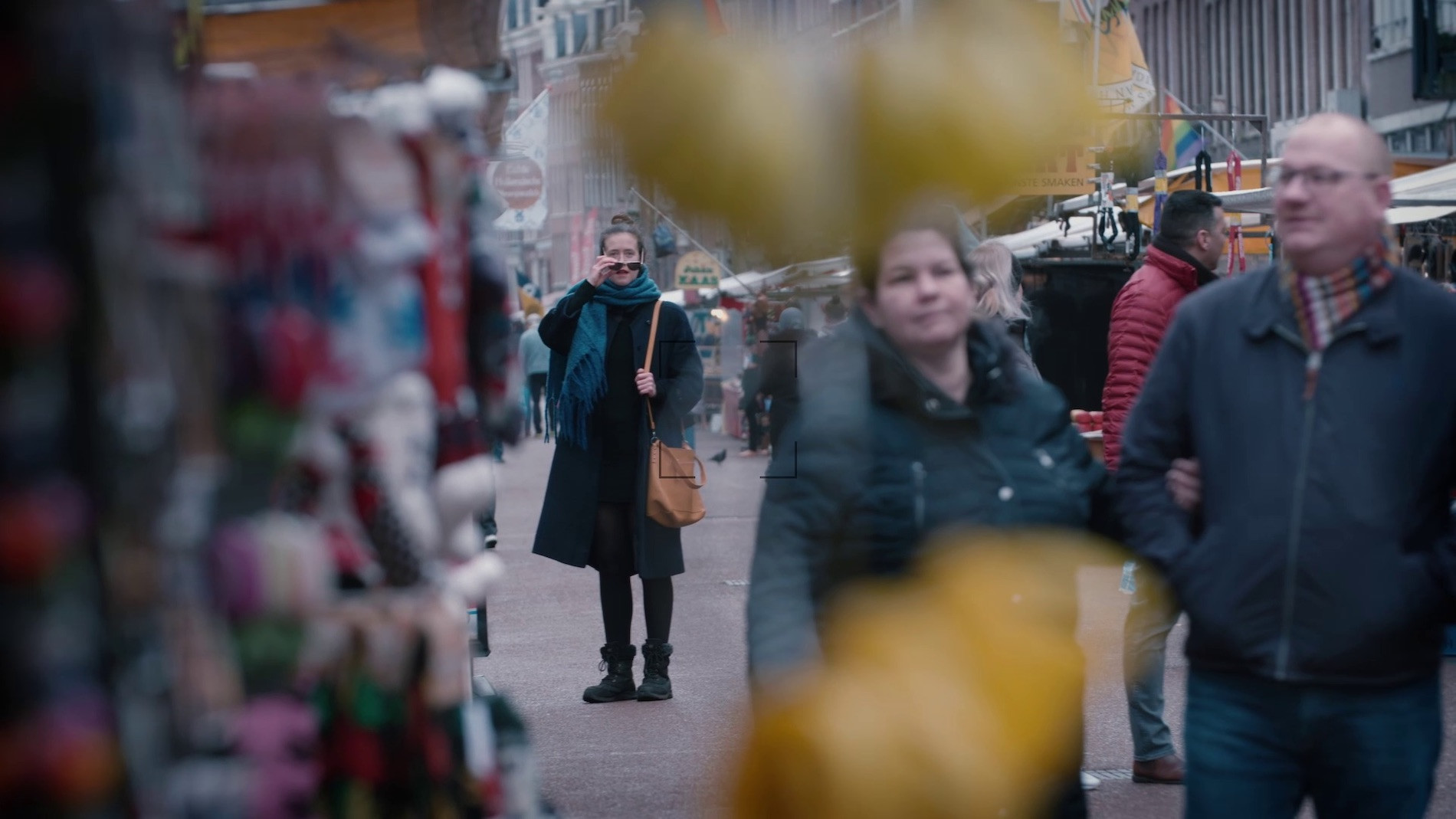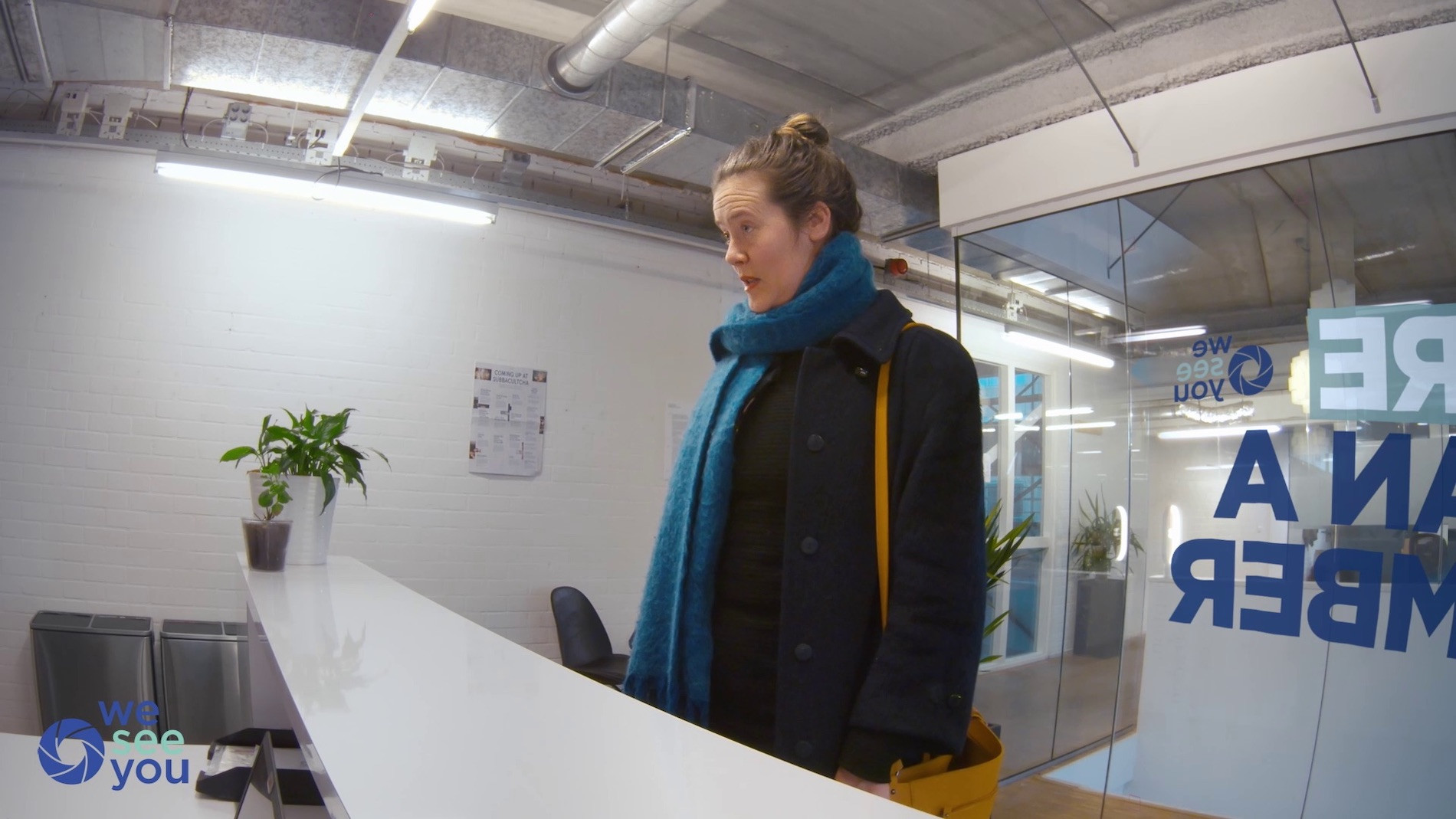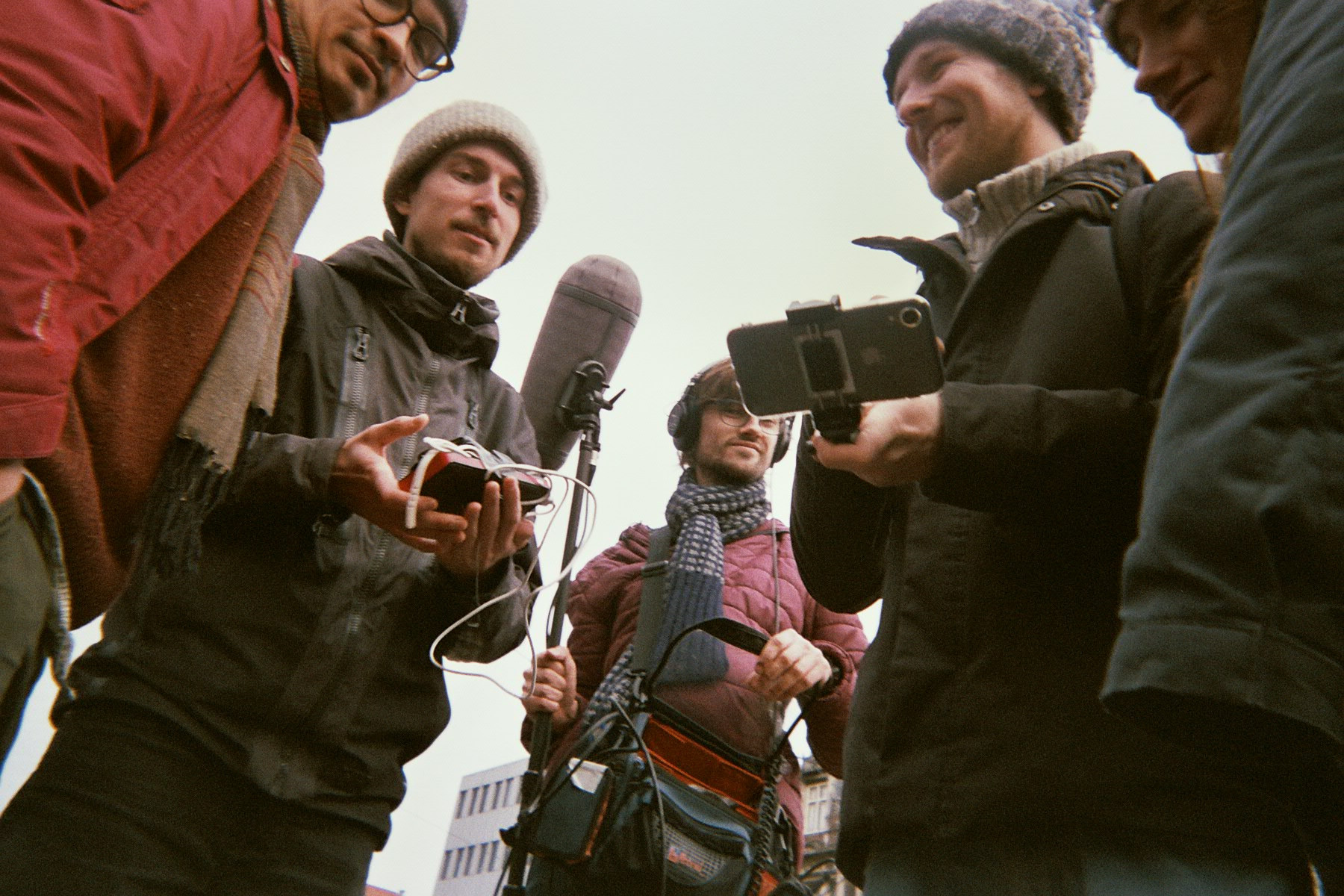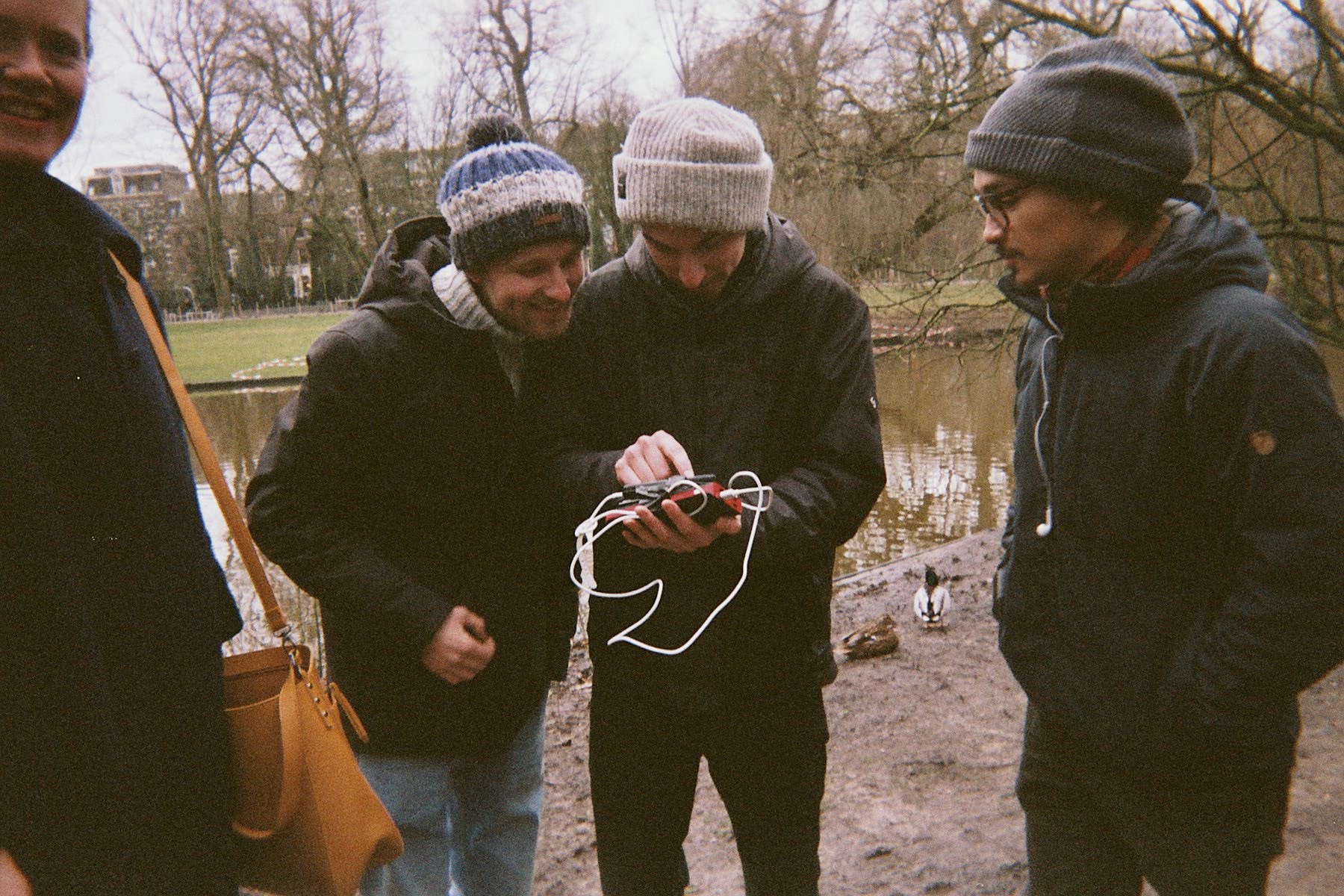
Case Study: The Woman Who Feared to Vanish
Sam van Zoest's film is part of the SHIFT Short Film Competition.
Geplaatst op 23 augustus 2020Sam van Zoest is a Dutch filmmaker and visual artist who graduated from the University of Edinburgh as a director. His film Proxy was screened at the Glasgow Film Festival, and his installation Undercurrent was on show at Explore the North in Leeuwarden. Currently Sam is working on an interactive film about climate change, a docu-drama about an eccentric group of artist-millennials (supported by CineSud), a documentary about volunteers in Greek refugee camps, and his first novel.
"It takes trust to know that even when you are silent, those around you still acknowledge or love you."
Creative liberation
"I wrote The Woman Who Feared to Vanish (The Woman) as a short story in a frenzy of inspiration while on a short holiday trip with my girlfriend. For a large part of my life I felt like I needed to shout for attention in order to be seen. It takes trust to know that even when you are silent, those around you still acknowledge or love you."
"In The Woman I took this idea further, placing a lonely character in a very cold world, where she resorts to hiring an agency to give her the sense that somebody is perceiving her. It was about 10 pages long then. It was very liberating for me to write a short story instead of a screenplay, as it allowed me to really look inside the heads of my characters. Later on, when I decided to turn it into a film, this helped me direct my actors much better as well."
"Another great thing about this short story approach is that I am so familiar with screenwriting conventions. A screenwriter should not be bothered with budgets, angles, or how a particular actor is going to look in a certain role. All of this stands in between his imagination and what is written down. My inexperience with the short story format allowed me to let go of all this and instead focus on the only important thing: the world as experienced through the eyes of my character."

From a short story to a screenplay
"I wrote the original short story in a single day. The screenplay, which I started about 9 months later - after my mum and my girlfriend encouraged me to turn it into a film - took way longer. The biggest challenge here was to visualise the interior monologue of the characters. The final chapter is a good example of this. After our protagonist is rejected by her stalker photographer, she meets a girl and they look each other in the eyes and they realise they are the same, that they are not the only lonely people in this world."
"In the short story I describe that the girl saw a withering flower in the woman that had once known love but which had now faded. However, she notes, with enough care and tenderness, that she could bring life back into this person and the flower within her could once again flourish."
"I struggled at great length to translate this into a scene that would work on the screen but in the end I think I succeeded. I never consulted with any established professional for the same reason that I didn't apply for funding with this film. I wanted to have full creative freedom and allow my heart to pour straight into the material without anyone interfering. That probably sounds really stubborn and arrogant but considering this is my first film since film school I feel it was the right choice. The script changed little during the shoot, in fact we used all the scenes in the final edit."

Playing with conventions
"I like listening to music that fits the universe of my film. In the case of The Woman I listened a lot to Underworld, Moby and Poul Kalkbrenner. The idea to shoot the movie through cameras that naturally appear in the world (cell phones, CCTV cameras, webcams) was born out of a desire to experiment with conventions I learnt in film school. In all honesty, I came up with the idea and found ways to justify it later and even now I keep discovering new effects every time I watch the film."
"First and foremost, the cameras make the viewer feel like an intruder. It's like they are not meant to see this woman. Secondly, it makes one wonder who is actually watching. Is it the company that she hired? Is it the cinema audience? Or do we really not know? I certainly don't know and I like it that way. After all, none of us really know if anyone is watching us. Lastly, the fact that the end of the film is shot with a conventional cinema camera, creates a juxtaposition. Suddenly we feel liberated from those low quality phone screens, just as the woman feels liberated from her desire for attention."
"After deciding the film should be shot on these cameras, the entire project went into a very experimental direction. I decided everything should be a little bit different from what we are used to, but still watchable. I imagine we could still take it way further! So the title design, the poster, the credits, everything has this quirkyness. Drafting the shot list with DOP Serhan Meewisse was a lot of fun, though it was challenging to convey my vision without being able to refer to examples in popular culture. This proved especially difficult for the final shot, which is very VFX heavy. A lot of elements come together here: acting, music, grading, composition, visual effects, sound design, editing, and for pretty much everyone it only fell into place after we completed it. I have to thank the cast and crew here for trusting me in this!"

Guerilla-style filmmaking
"One day before shooting, one of the actresses dropped out. Luckily Judith Schrijver was able to jump in, saving the production from being post-poned. We started with the most difficult shot on the first day and it was rainy as well. The advantage of this was that from that moment on it could only get better, and it did."
"On most of the days we also only worked with about three crew members (myself, Serhan and sound recordist Bram van Kaauwen) and one or two actors. This was great. We were able to move fast and efficiently and there was lots of space for everyones' input. It really felt like we were creating an art piece together rather than me giving out orders to my crew. This is a way of working which I hope to take with me to other shoots."
"Overall I would describe the atmosphere on set as loving and creative, which I think worked well for the difficult material of the film. Particularly shooting in public places was a lot of fun. We shot in a lot of locations of which I was sure permission would be denied, such as Amsterdam Central Station, on the metro, and in parking garages, so we did so illegally. This type of guerilla style filmmaking is very exciting, though it is of course important to prepare your cast and crew for this and have a willingness to take responsibility should it come down to that."

Finishing touches
"The film was edited by Rowdy Wiegmans. We didn't cut very much from the script, only changed the order a little. The film was meant to start with Judith Schrijver on the phone and then we would move to the scene were Lottie de Bruijn is shouting for the photographer at the train station. We decided to open the film with Lottie as this was a much more mysterious and quirky way to start. The most challenging was the final shot of the film, which includes three shots of eyes composited inside one other. I spent a month working on this during the quarantine."
"The sound design was done by Poul Sven de Haan, a really dedicated and professional artist whom I am now working with on a number of projects. He also got me in touch with the insanely talented composer René Hinborch, whom I expect to break through very soon. My initial plan was to only use existing music for the film, mainly Moby. However, the editing and timing of the opening scene made it impossible to find a fitting track. Usually I am pretty weary of first drafts, but René's work blew me away each time. I think we went through about 5 revisions for each piece of music, which I think is pretty smooth sailing."
"Since I was so impressed by his work on the opening scene, I asked him to do the closing scene and credits as well. For this we used a female choir called Kitka. They sing traditional songs from the Balkan region and offered the exact spiritual but not Christian feel I was looking for. Most choir music in the west is very Christian and that would have been a distracting reference. So we used Kitka. Their music is available for sampling and I think René did a fantastic job in incorporating it into the score. The grading was done by Serhan. He is great."

Worth a second glance
"So far I have submitted the film to various festivals and SHIFT is actually the first one we heard back from. I hope to find other ways of distribution besides festivals though, as I feel it's a pretty difficult way to reach an audience that doesn't already watch short films. On the other hand it makes sense, especially for this film, which is challenging for audiences to watch. Most people require at least two screenings to pierce the entire story together, which is an interesting side effect from the cinematographic style. Since the camera is almost always a fly on the wall, it's up to the audience to decide where to put their attention, and it's easy to miss an important detail for the story. I didn't anticipate this but welcome it nonetheless, I'm no fan of well-rounded stories that end as soon as the credits roll for the first time."
Be prepared to unlearn
"My advice would be to listen to one's inner voice, whatever this means for you. Don't create because you want to be a creator but because you want to create. Ask yourself what you truly want to make or see. If you are gonna go to film school, attend masterclasses, learn from professionals, be prepared to unlearn. The beautiful thing about being human is that we are able to change our opinions. Take pride in changing your views. Be nice. Make art without an intent of publication. Read books. Stop doing things that make you feel miserable. Figure out what works for you, and ignore the rest."

The Woman Who Feared to Vanish
Short Film Competition 2
September 12, 18.00-19.30, Online
(c) All visual material is used with the filmmaker's permission.